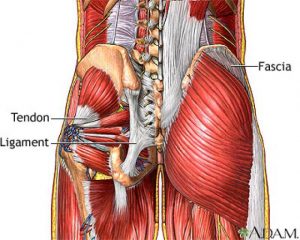Myofascial Release With Foam Roller
Who better to feel where you have tension in your body than you?! Here are some tips on using a foam roller to help with that.
Author: Charley Hickey C-IAYT – Owner, Charleyoga. Yoga Therapist, Yoga Teacher, Pilates, Self-Myofascial Release
Myofascial
[mī·ōfa′shē·əl]
Pertaining to a muscle and its sheath of connective tissue, or fascia.
Mosby’s Medical Dictionary, 8th edition. © 2009, Elsevier.
Fascia covers all organs of the body. Muscle and fascia cannot be separated therefore all muscle stretching is myofascial stretching. Myofascial stretching in one area of the body can often be felt in and will affect the other body areas. Release of myofascial restrictions can affect other body organs through a release of tension in the whole fascial system.
Self Myfascial Release (SMR) is part of a systematic approach to correcting myofascial imbalances. Combining this with other components will assist the body to return to optimal functional efficiency thus allowing the body to move and feel better.
Some of the outside influences that can cause imbalances include:
- Tension caused by impact or deceleration of the body during movement.
- Sedentary lifestyle or repetitive activities (RSI)
- Poor hydration
- Wearing high heels or ill fitting shoes.
- Old Injuries
- Building Muscle strength quickly without balancing with flexibility practices
DIY With Foam Roller
What is so great about SMR using the foam roller is that you don’t have to rely on an expert using trial and error and relying on you for feedback to find and release areas in your body that are tight.
A gentle force is applied with the foam roller using body weight as resistance. This is thought to cause the elastic collagenous fibres to be manipulated from the bundled position into an alignment that is straighter with the direction of the surrounding tissues.
This method allows you to simply feel around yourself until you find areas that need attention. You can then work at your own pace within your own comfort levels. Of course if you are unsure or feel you need some further guidance then you can always consult with someone who is trained to assist you. We offer one on one yoga therapy sessions and workshops on this topic regularly.
If you have an injury or inflammation then it is essential that you seek professional guidance before you use the roller on or around that area.
When you first begin or if you have quite a bit of tension or pain in your body then it is a good idea to start with a really soft, smaller foam roll. A pool noodle works fine although you may find for some areas this will be too soft and they are not particularly hardwearing so you’ll eventually need to invest in a higher density, professional quality foam roll if you wish to continue (we sell them here)
Foam Roller Technique
To measure the tightness of a spot, we use a comfort scale of 1 – 10 with 1 being no discomfort and/or tightness felt at all and 10 being extreme discomfort and/or tightness.
- Position muscle to be worked on roller (seek guidance if unsure)
- Roll up, down and across the muscle until tender point is found
- This should be around a 7 on the comfort scale
- Once tender spot is found, pause for 30 – 60 seconds
- Breathe easily & consciously and relax the rest of body as much as you can
- Stay here until the discomfort decreases by approx 75% (to level 1 – 3 on comfort scale)
- If no change, move on anyway.
- Continue to roll muscle and repeat on any further tender points.
Self Study
Self study is a large part of living a yogic lifestyle. Being in touch with how we feel at a particular time and starting to recognise for ourselves some of the things that cause us stress in body and mind are the first steps.
For example, if you notice that you have a tight hamstring on one side and it always happens on a Tuesday it may be useful to note what it is that you do on that day that causes it and if it is possible to make a change.
By doing this you will be amazed how effectively you can self diagnose and take steps to treat the stress in your own life. However, it is also important to recognise when you may need outside help from a qualified health professional. All is not lost as your yogic self study and awareness of the problem could possibly help to come to a quicker diagnosis and therefore a faster recovery.
So, you are well on your way down the path to DIY stress relief for body and mind! For a more thorough introduction, book into our next Self Myofascial Release (Foam Roller) and Yoga Workshop here >>
References
Manheim, Carol. 2001. The Myofascial Release Manual. 3rd Edition. Slack Inc
Mosby’s Medical Dictionary, 8th edition. © 2009, Elsevier
O’Dwyer, Ian 2007 – OD on movement
http://0.tqn.com/d/chronicfatigue/1/0/2/-/-/-/MusclePain.jpg


